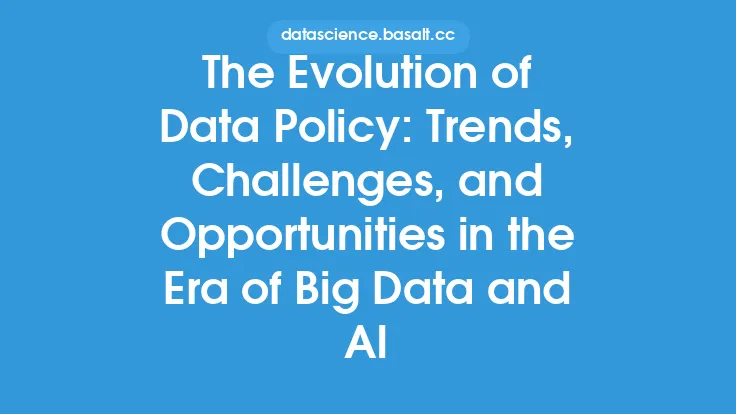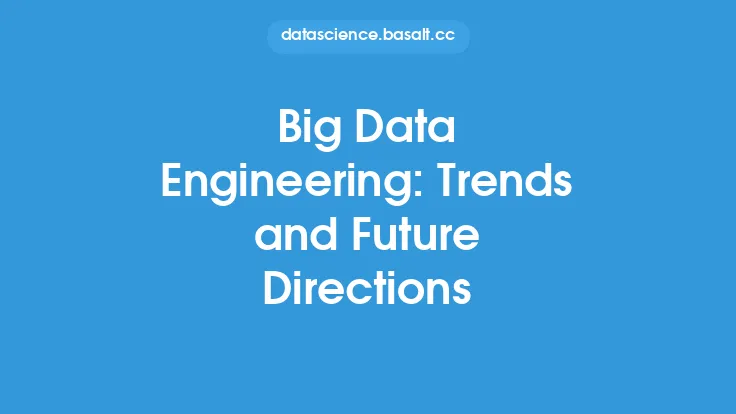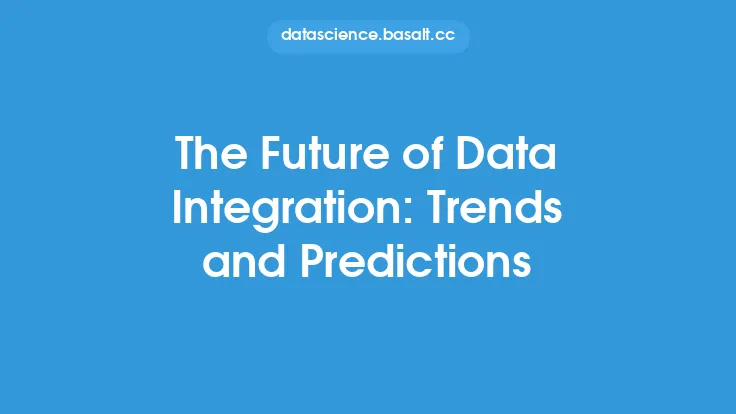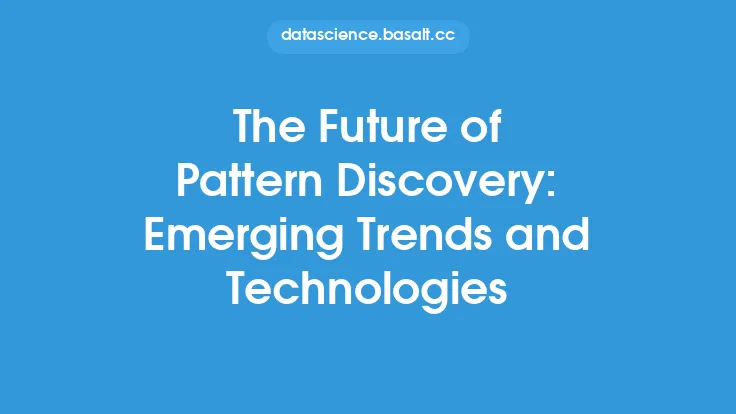The concept of data warehousing has been around for several decades, with its roots dating back to the 1960s and 1970s when businesses first began to recognize the importance of collecting and analyzing data to inform decision-making. However, it wasn't until the 1980s that the term "data warehouse" was first coined by Bill Inmon, a renowned expert in the field. Inmon defined a data warehouse as a "centralized repository that stores data from various sources in a single location, making it easily accessible for analysis and reporting."
Introduction to Data Warehousing Evolution
In the early days of data warehousing, the primary focus was on building large, centralized repositories that could store and manage vast amounts of data. This was driven by the need for businesses to gain insights into their operations, customer behavior, and market trends. The first data warehouses were typically built using mainframe computers and were designed to support simple reporting and analysis. As technology advanced, so did the capabilities of data warehouses. The introduction of relational databases in the 1980s and 1990s enabled the development of more sophisticated data warehouses that could support complex queries and analysis.
Trends in Data Warehousing
The 1990s and 2000s saw a significant shift in the data warehousing landscape, with the emergence of new technologies and trends. One of the key trends during this period was the adoption of data mart architecture, which involved building smaller, decentralized data warehouses that were focused on specific business areas or functions. This approach enabled businesses to develop targeted data warehouses that could support specific analytical needs, rather than trying to build a single, monolithic data warehouse. Another trend that emerged during this period was the use of extract, transform, and load (ETL) tools to manage the flow of data into and out of the data warehouse. ETL tools enabled businesses to automate the process of extracting data from various sources, transforming it into a standardized format, and loading it into the data warehouse.
Future Directions in Data Warehousing
In recent years, the data warehousing landscape has continued to evolve, with the emergence of new technologies and trends. One of the key trends in modern data warehousing is the adoption of cloud-based data warehouses, which offer greater scalability, flexibility, and cost-effectiveness than traditional on-premises data warehouses. Cloud-based data warehouses also enable businesses to take advantage of advanced analytics and machine learning capabilities, such as those offered by Amazon Redshift, Google BigQuery, and Microsoft Azure Synapse Analytics. Another trend that is gaining traction is the use of data lakes, which involve storing raw, unprocessed data in a centralized repository. Data lakes offer a number of benefits, including the ability to store large amounts of data at a lower cost than traditional data warehouses, and the ability to support advanced analytics and machine learning use cases.
Technical Aspects of Data Warehousing
From a technical perspective, data warehousing involves a number of complex processes and technologies. One of the key technical aspects of data warehousing is the design of the data warehouse architecture, which involves defining the structure and organization of the data warehouse. This includes deciding on the type of data warehouse to build, such as a star or snowflake schema, and defining the relationships between different tables and data elements. Another technical aspect of data warehousing is the development of ETL processes, which involve extracting data from various sources, transforming it into a standardized format, and loading it into the data warehouse. This requires a deep understanding of data modeling, data transformation, and data loading techniques.
Data Warehousing and Big Data
The emergence of big data has had a significant impact on the field of data warehousing, with many businesses struggling to manage and analyze large volumes of structured and unstructured data. To address this challenge, many businesses are turning to big data analytics platforms, such as Hadoop and Spark, which offer advanced capabilities for processing and analyzing large datasets. These platforms enable businesses to store and process large amounts of data in a distributed manner, using commodity hardware and open-source software. They also offer a range of advanced analytics and machine learning capabilities, such as data mining, predictive analytics, and natural language processing.
Data Warehousing and Artificial Intelligence
Artificial intelligence (AI) is another area that is having a significant impact on the field of data warehousing, with many businesses using AI and machine learning algorithms to analyze and gain insights from their data. AI and machine learning can be used to automate many of the processes involved in data warehousing, such as data integration, data transformation, and data analysis. They can also be used to identify patterns and relationships in the data that may not be apparent through traditional analysis techniques. For example, AI and machine learning can be used to predict customer behavior, identify trends and anomalies in the data, and optimize business processes.
Conclusion
In conclusion, the field of data warehousing has undergone significant evolution over the years, driven by advances in technology and changing business needs. From its roots in the 1960s and 1970s to the modern cloud-based data warehouses and big data analytics platforms of today, data warehousing has played a critical role in enabling businesses to gain insights into their operations, customer behavior, and market trends. As the field continues to evolve, we can expect to see even more advanced technologies and trends emerge, such as the use of AI and machine learning, and the development of more sophisticated data warehousing architectures. By understanding the history, trends, and future directions of data warehousing, businesses can better navigate the complex landscape of data management and analytics, and unlock the full potential of their data to drive business success.





